Although many enterprises are working hard to virtualize and replace their legacy network hardware, a large number of companies still rely on their on-premises tools, particularly in the realm of data storage and file management. Network attached storage (NAS) is one type of on-premises storage that many companies invest in because of its ease of use and implementation. According to a study by Mordor Intelligence, the NAS market is expected to grow from a $21.55 billion value in 2020 to $62.77 billion by 2026.
But NAS hardware would be nothing without its operating system, the NAS software that makes data storage and file sharing possible. Whether you’ve already subscribed to the NAS model and are looking for a new software solution or you’re looking for an easy way to scale your storage capabilities on-premises, read on to learn about some of the top NAS software companies and solutions on the market today.
Here are out top picks for NAS software in 2023:
- TrueNAS CORE: Best overall
- NetApp NAS ONTAP: Best for hybrid cloud and multi-cloud users
- XigmaNAS: Best for features and compatibility
- Hitachi NAS Platform: Best for data migration
- Rockstor: Best for DIY NAS
- Synology DiskStation Manager: Best for data protection
- OpenMediaVault: Best for small offices or home offices
Top NAS software comparison
| Best for | RAID support | Data backup | Pricing | |
|---|---|---|---|---|
| TrueNAS CORE | Best overall | Yes | Yes | Free, open source |
| NetApp NAS ONTAP | Hybrid cloud and multi-cloud users | Yes | Yes | Custom quote |
| XigmaNAS | Features and compatibility | Yes | Limited | Free, open source |
| Hitachi NAS Platform | Data migration | Yes | Yes | Custom quote |
| Rockstor | DIY NAS | Yes | Limited | Free, open source |
| Synology DiskStation Manager | Data protection | Yes | Yes | Starts at $9.99/yr for 100GB |
| OpenMediaVault | Small offices or mome offices | Yes | Limited | Free, open source |
Jump to:
- What is NAS?
- What is NAS software?
- Enterprise benefits of NAS software
- Key features of NAS software
- Who needs NAS software?
- Methodology

TrueNAS CORE
Best overall NAS software
TrueNAS CORE, previously known as FreeNAS, is one of the longest-standing and most popular free, open source NAS solutions available for enterprise users, with several million downloads since it started in 2005.
This NAS solution goes beyond the basics that many other tools offer, including its OpenZFS file system, the choice between thick and thin provisioning, and other highly customizable features that are best handled by an experienced sysadmin or power user.
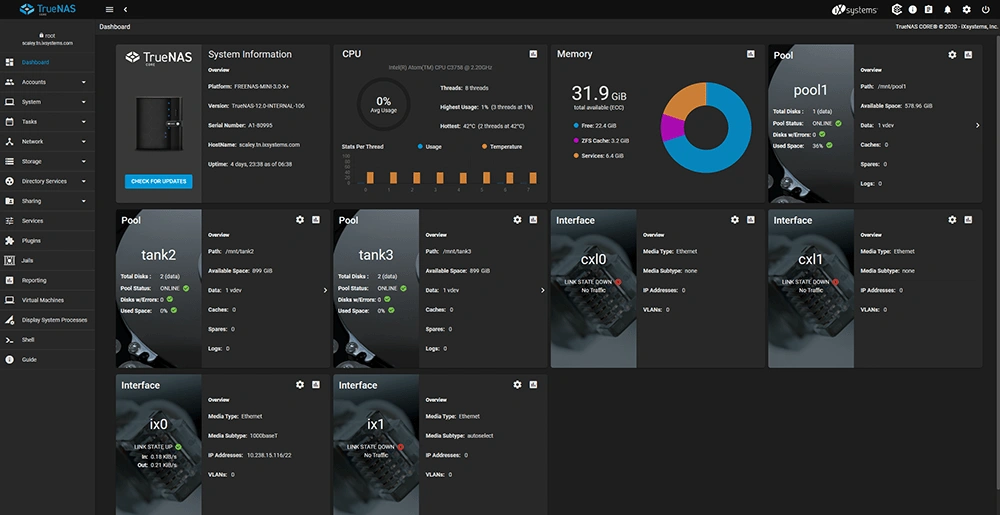
TrueNAS CORE minimum hardware requirements include a network port and at least one attached disk. Other requirements are:
- Processor: 2-Core Intel 64-Bit or AMD x86_64 processor.
- Memory: 8GB memory.
- Boot device: 16GB SSD boot device
- Storage: Although not compulsory, TrueNAS CORE recommends solid-state drive (SSD)
Since it is the most popular solution on the market, TrueNAS also offers several partnerships and integrations with cloud storage providers, media servers, and automation servers, making it a strong holistic solution for users who are already experienced with storage design and management.
Pricing
TrueNAS CORE is free and open source. You can download the TrueNAS CORE 13.0-U4 stable version or the TrueNAS CORE 12.0-U8.1 legacy version.
Features
- Self-healing OpenZFS File System for data safeguarding.
- Built-in RAID protection and volume manager.
- Unlimited snapshots and clones.
- Data compression, thick provisioning, and thin provisioning.
- LDAP and Active Directory integrations available.
- Supported OS clients include Windows, MacOS, Linux, UNIX, iOS, and Android.
- TrueNAS CORE offers various plugins, including Plex Media Server, PhotoPrism, NextCloud, Zoneminder surveillance, Netdata, Syncthing, Tarsnap, GitLab, and more.
Pros
- TrueNAS offers virtualization, as well as flexible operations and permissions, through its Jails feature.
- Offers self-encrypted drives (TCG Opal) and dataset encryption.
- Users enjoy community support.
Cons
- Some users have experienced bugs with the beta version of the latest TrueNAS CORE version.
- Lacks commercial-grade support.

NetApp NAS ONTAP
Best for hybrid cloud and multi-cloud users
Many users recognize NetApp for their data management solutions on the cloud, but their scale-out NAS powered by the ONTAP ecosystem provides an on-premises data storage connection that’s ideal for hybrid cloud and multi-cloud users in particular.
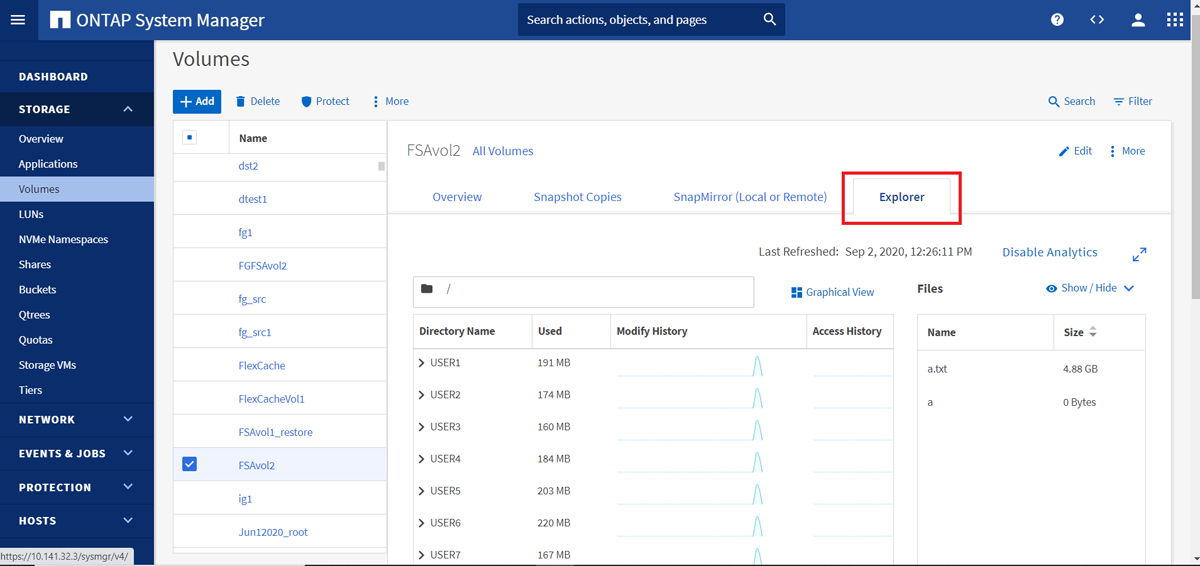
Because of its strong cloud foundation, NetApp’s NAS solution is one of the strongest contenders on this list for AIOps and other automated office operations that require strong data management.
Pricing
This software pricing is not advertised on the NetApp website, you can request a quote or book a free demo to learn more about the tool.
Features
- Public cloud, data center, and edge access to data with integrated caching capabilities.
- Automatic tiering for cold data to public or private cloud locations.
- AIOps automation of proactive care for NetApp environments.
- Automated protection from ransomware.
- Volume and in-transit levels of encryption, plus secure file purging.
- Capacity and predictable low latency for high-metadata workloads.
Pros
- NetApp offers several native security and data protection features and many integrations that round out their data security offerings.
- Compress and dedupe storage without performance impact.
- Low latency for high-metadata workloads.
Cons
- Upgrades and jobs processing are sometimes disruptive to other network functionality.
- According to some user reviews, the tool is expensive.

XigmaNAS
Best for features and compatibility
XigmaNAS is an open source, BSD-based NAS solution that prides itself on providing users with updates and improvements over time, not just at the time of deployment. The XigmaNAS team focuses on providing regular upgrades and updates based on community feedback, which means that bug fixes, new features, and component upgrades are a part of their regular scope of work.
Figure F: Image: XigmaNAS System Information Dashboard
Perhaps even more significantly, XigmaNAS’s open source setup and their developer team have created the software to be highly compatible with most protocols, portable hardware, and other operating systems on the market.
Pricing
XigmaNAS is available for free. You can download the tool at no cost and it’s available in four different file formats, including LiveCD file (.iso file), LiveUSB file (.img.gz file), embedded firmware update file for upgrade embedded installations (.img.xz file), and a full update file for upgrade full installations (.txz file).
Features
- Sharing is available across Windows, Apple, and UNIX-like systems.
- Can be installed on compact flash or hard disk or booted from a live location for configuration storage.
- Open Source Storage NAS distribution based on FreeBSD.
- Disk encryption, email reporting, and RAID features.
- Operational on CIFS/SMB (Samba), Active Directory Domain Controller (Samba), FTP, NFS, TFTP, AFP, RSYNC, Unison, iSCSI (initiator and target), HAST, CARP, Bridge, UPnP, and BitTorrent protocols.
Pros
- Users compliment the software’s compatibility with a wide variety of USB drives and other portable hardware.
- Users find this tool easy to install and configure.
Cons
- The latest versions of XigmaNAS take an extended period of time to become available for some computer systems as they’re released, such as Raspberry Pi 4.
- Steep learning curve for new users.

Hitachi NAS Platform
Best for data migration
Hitachi’s NAS platform provides many of the same core features as other NAS solutions on this list, but many of its additional features are designed to aid in virtualization and cloud migration projects. Some of the key differentiators in Hitachi’s product include cluster rolling upgrades, EVS failover offerings, advanced cloud integration, intelligent tiering, and policy-based data migration.
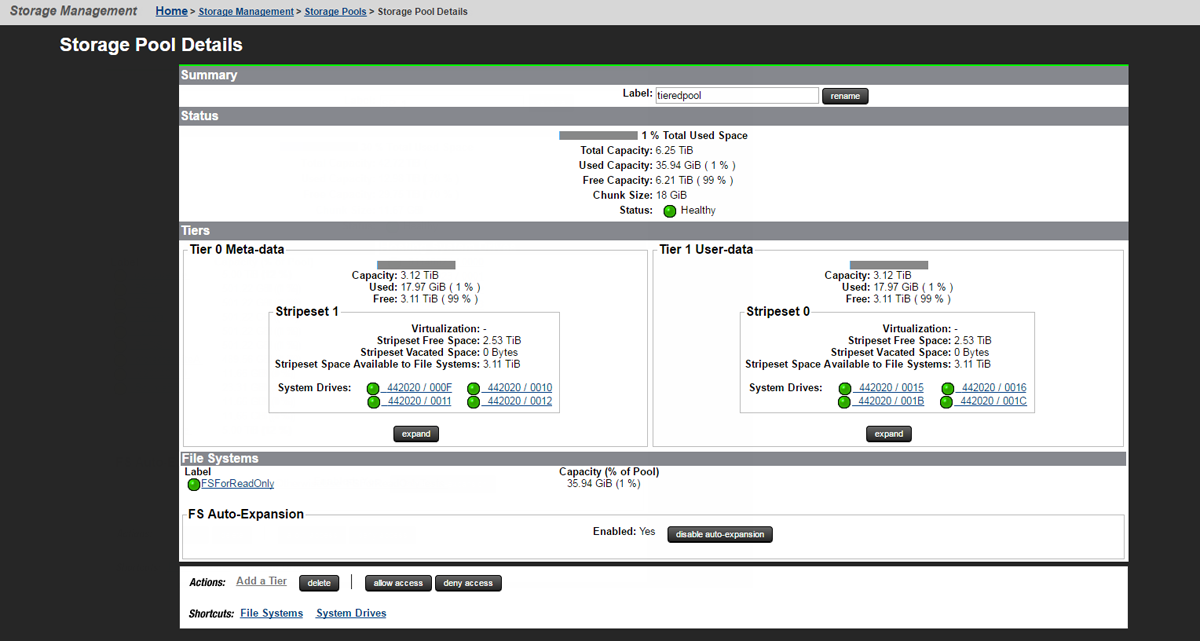
With their blend of cloud and on-premises focus, Hitachi and their NAS platform offer a great solution for organizations that are only dipping their toes into the cloud or who are committed to maintaining key applications and data on-premises for the long run.
Pricing
Hitachi offers a wide range of purchase and lease options for their NAS software as part of their EverFlex service.
Features
- Support for global-active device metro clustering.
- Automated deduplication with high user visibility.
- Synchronous disaster recovery feature.
- Unified point of data access via Namespace.
- Policy-driven migration tools for cloud migrations.
Pros
- Migration and deployment are simplified via Hitachi’s cluster rolling upgrades and EVS failover offerings.
- Features tiered file system to enhance performance and optimize users disk usage across multiple tiers of storage.
- High compatibility range.
Cons
- Some users find the user interface and overall layout of the platform to be somewhat dated.
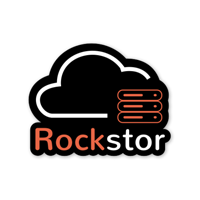
Rockstor
Best for DIY NAS
Rockstor is an open source NAS solution that works with both Linux and BTRFS, also offering the flexibility to power a combination of NAS and cloud storage sources. This open source project is one of the most UX/UI-centered NAS solutions on the market, offering a helpful web UI for open source development. Users are able to resize volumes, schedule snapshots and scrubs, replicate shares, and conduct other data management operations from the central web UI.
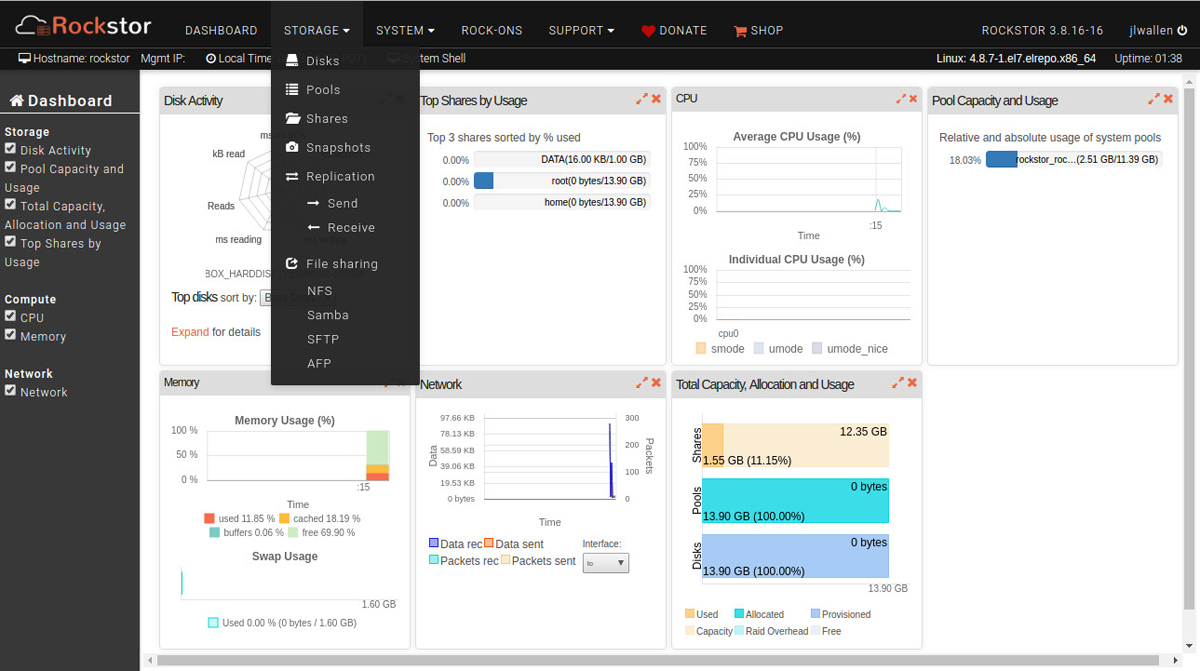
Although some users feel that the BTRFS and Linux focus might make it challenging for first-time users and non-developers to work with this NAS product, Rockstor provides several resources as a guide, such as their Wiki, issue tracker, and online forum.
Pricing
Rockstor is a free and open source tool. The tool has various downloads and installation options, including Generic, RaspberryPi4, and ARM64EFI.
Features
- Linux BTRFS NAS software appliance.
- Maintenance performed by Rockstor Web-UI.
- Support for NFS, Samba, AFP, and SFTP protocols by default.
- Open source software with community-driven support and development.
- CentOS 7 or openSUSE development available.
Pros
- This solution offers a large library of plugins or “Rock-ons” that can be containerized via Docker.
- Copy on Write (CoW) Snapshots capability enables users to take a snapshot or schedule snapshots at intervals via the Rockstor’s web-ui.
- The tool is installable on commodity hardware like X86_64 and ARM64.
Cons
- Rockstor is run on the BTRFS file system, which is newer and less tested than most other file system options.

Synology DiskStation Manager
Best for data protection
Synology’s DiskStation Manager is a modular NAS solution that focuses most heavily on data protection and security. They offer their security features and other applications through Synology packages, allowing for a lightweight structure in which users can granularly manage everything from multimedia to virtualization to user management.
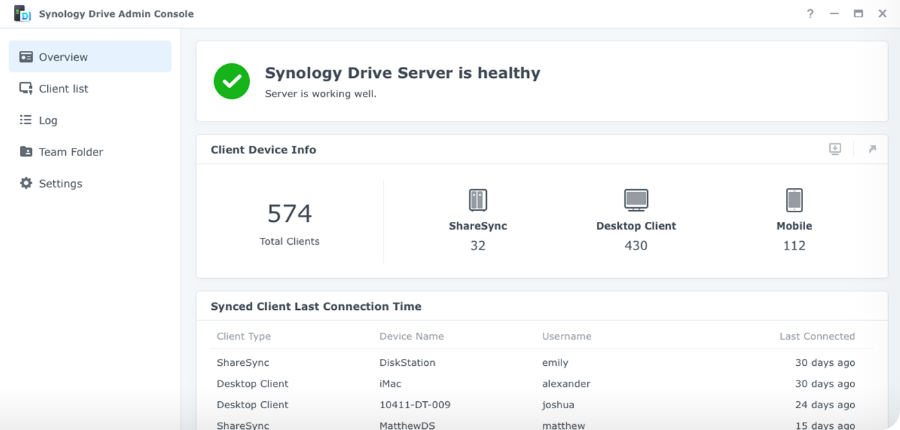
Synology also provides a wide array of self-service solutions on its website, providing users with selector and calculator tools, an online community and beta programs, and a knowledge center.
Pricing
Pricing for this solution vary based on customers’ desired products. For instance, Synology C2 Storage has two customizable plans:
- Basic: 100GB – 1TB for $9.99 – $59.99 per year. Includes daily backup, fixed retention, and AES-256 encryption.
- Advanced: 1TB – 200TB for $69.99 – $11,073 per year. Includes hourly backup, customizable retention, data deduplication, Hybrid Share, and AES-256 encryption.
Users can use Synology NAS Selector tool to determine the best product for their use cases and contact their sales team for customized quotes, including data limits beyond 200TB.
Features
- Centralized platform for file and multimedia management.
- Private collaborative workspace tools available for teams.
- Virtualization with the direct deployment of virtual machines and containers.
- Centralized monitoring and configuration.
- Directory services for user management.
- Users can access Synology NAS via browsers, SMB, NFS, AFP, FTP, and WebDAV.
Pros
- Synology provides a wide variety of security features, such as granular permissions and multifactor authentication (MFA).
- Monitor and manage storage with use analysis.
- Multi-site file access.
- Supports Windows, Linus, and macOS.
- Its NAS selector tool helps users tailor plans to their specific needs.
Cons
- Remote access, especially mobile access, is considered somewhat difficult.
- Support could be improved.
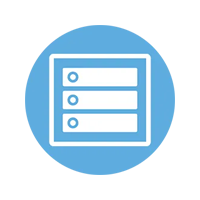
OpenMediaVault
Best for small offices or home offices
OpenMediaVault is an open source, Linux-based NAS solution that is most frequently used in home office and small office settings. However, enterprises can scale the project to meet their needs through third-party plugins integrated into the base system and the OMV-Extras repository.
Like many other NAS solutions, OpenMediaVault offers file sharing, storage monitoring, and disk management to users, though it offers bare-bones versions of these features to make it easier to set up and use at home.
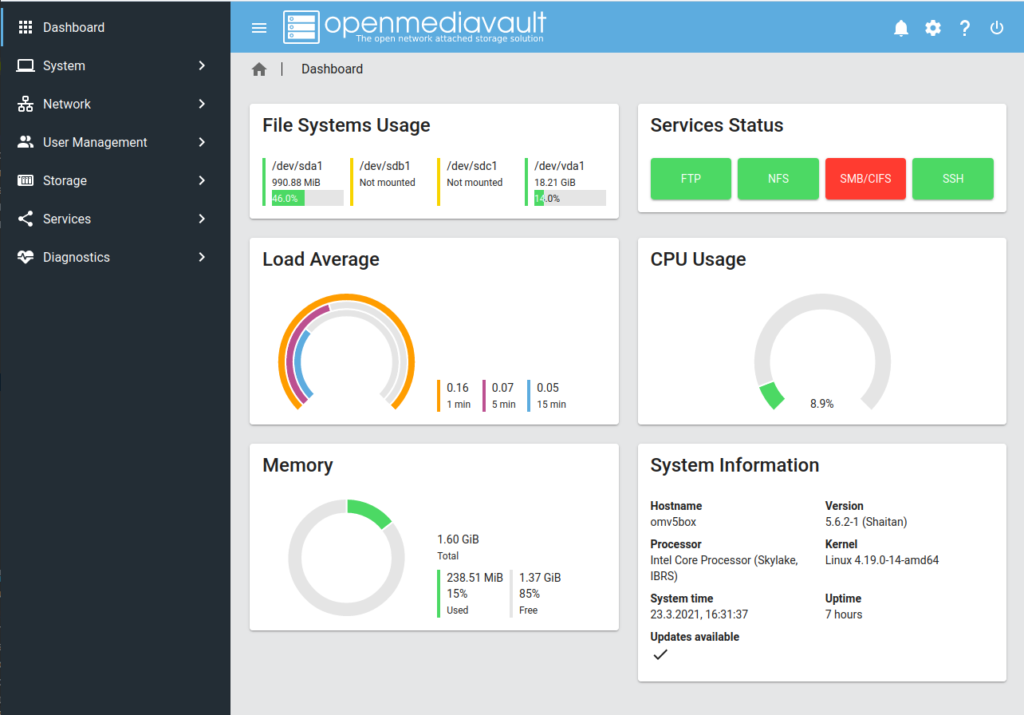
Although its features may be limited, OpenMediaVault’s open source flexibility and Debian-based setup with documentation make it simple for users of varying experiences to manage this solution.
Pricing
OpenMediaVault is available for free. Users can download either the old stable version or the latest stable version.
Features
- Offers services like SSH, (S)FTP, SMB/CIFS, DAAP media server, RSync, and BitTorrent client.
- Modular framework with plugin availability.
- Debian package management for system updates.
- Email notifications and file sharing.
- Link aggregation available.
Pros
- The OpenMediaVault project offers a strong support community with extensive documentation.
- Web-based administration.
- Supports multiple RAID levels.
- Users can enhance the tool via various plugins including ClamAV, Onedrive, USBbackup, Shairport, and more.
Cons
- Because OpenMediaVault focuses on small and home office use cases, it falls behind other NAS solutions in user interface updates and file sharing options.
- Limited enterprise capability.
What is NAS?
Network attached storage (NAS), is on-premises data storage hardware. Although it can and is often used for personal and home network setups, NAS plays a big role in on-premises data management for enterprise networks as well.
In partnership with NAS software and other data storage locations on the network, NAS hardware acts as a source for data retrieval and file sharing within the data center. Because of its specialized focus on data management and sharing, NAS is often compared to a specialized file server, or a server that focuses on the single task of file sharing while bypassing other server responsibilities.
What is NAS software?
NAS software is the operational software embedded in NAS hardware, enabling actions like file and data sharing on the network from that central point. It handles network requests for two primary functions: data storage and data sharing.
Clients on the network are able to access and make requests of NAS via data transfer protocols, but from the user perspective, anyone on a client device can seamlessly access NAS data resources.
NAS vs. SAN
NAS offers similar functionalities to the storage area network (SAN), one of the most commonly used types of network storage for business-critical applications. Both NAS and SAN are types of centralized storage management that focus solely on sharing data with hosts and clients on the network.
However, NAS is based only on an ethernet connection, while SAN relies on ethernet and fiber connectivity to improve latency times. SAN better fits organizations that require higher performance and low latency for their data management needs, but NAS is typically more affordable, and easier to set up and manage in the long run.
Enterprise benefits of NAS software
NAS offers many key advantages to enterprise networks, especially those that want scalable storage with a low learning curve:
Added data security
NAS typically includes built-in security features, adding an additional layer of security for your data. Some important security and disaster recovery features offered by NAS include data snapshots and backups, encryption, and data replication.
Simpler configuration
Unlike many other storage setups, NAS allows users to tack on storage solutions without needing to change their network architecture for installation and setup.
The overall design and functionality of a NAS system are simple and focused on data movement, so even if problems arise over time, it’s easier to pinpoint and resolve the issue because of its simple structure.
Lower costs
With a number of free and open source solutions on the market, NAS is one of the most affordable solutions for enterprise-level storage management. Although some organizations may want or need the add-ons that come with paid NAS solutions, most NAS products accrue little to no additional cost after initial setup.
Scalability and accessibility
The structure of NAS storage makes it work a lot like a private cloud, though solely focused on data management and sharing. The cloud-like setup makes NAS incredibly flexible and scalable, allowing users to share data, collaborate on projects, and maintain remote access to data from that central location.
Key features of NAS software
NAS software typically only offers a few simple functionalities as it relates to data storage, retrieval, and management. However, some other security and data quality features are typically included by default, such as RAID support, centralized management, and remote access, as well as data backup, recovery, replication, and automated tiering.
RAID support
RAID controllers are the hardware or software programs used to manage drives within NAS so they all work as a unit. RAID, which stands for redundant array of independent disks, allows users to utilize multiple hard drives to store data and keep it safe from drive failures.
There are various types of RAIDs, including RAID 0, RAID 1, RAID 5, RAID 6, and RAID 10. Experts typically recommend RAID 5 as the best and the most widely used configuration for NAS devices, as it provides redundancy and still enables users to utilize most of their hard drives for storage space. On the other hand, RAID 0 has a lot of performance benefits but with high risks of data loss.
Centralized storage management
NAS helps consolidates file storage and sharing. It enables multiple users to access files stored on the NAS device over the network, making it easy for teams to collaborate on projects and to share and access important files from a central location.
With NAS software, administrators can also allocate storage space, set up access controls based on roles and manage data backups and recovery from a single interface. This makes managing and maintaining data security easier and ensures that storage capacity is optimized and utilized efficiently.
Remote access
NAS software offers users a convenient way to access their files via the internet using various protocols like FTP, HTTP, or SFTP. This makes it easy for distributed teams to work from home, access files while traveling, or share files with clients or partners in different locations.
Data backup and recovery
Some NAS solutions offer data backup and recovery capabilities to minimize downtime and protect against data loss. This includes automatic backup schedules, snapshots, and replication features. Data backup and recovery capability ensures data is backed up regularly and that there are multiple copies of important files.
Data snapshots take digital pictures of your data at a certain point in time, ensuring that if your systems experience a data breach or other type of data loss, a previous version is available for retrieval. Data backups are more robust versions of data snapshots, not only taking an image of the data at a certain point, but backing up all relevant versions and historical instances of that data.
Data replication and automated tiering
Data replication makes it possible to pull data snapshots and backups into use if the source data goes offline for any reason. With data replication, the NAS can create a copy based on what the snapshot data illustrates. Automated tiering is often included in NAS setups, allowing overflow data or data of different priority levels to be shifted to the cloud, edge, and other storage environments.
Scalability
With NAS software, administrators can add or remove storage capacity as needed, making it easy to adapt to changing requirements and accommodate growing storage needs.
Security
Organizations that handle sensitive data, such as financial or personal information, will find NAS software security features indispensable. It generally offers advanced security to protect against data breaches and unauthorized access, such as data encryption, access controls, and authentication mechanisms.
Who needs NAS software?
Data storage is not a one-size-fits-all solution. Every enterprise network requires storage support for different use cases based on different budgets and varying levels of internal expertise.
NAS storage may not work well for organizations that require ultra-low latency and quick results when retrieving or sharing data. However, it is a competitive solution in the following scenarios:
- An enterprise looking for data storage that’s easy to configure and set up. A “set-it-and-forget-it” approach is its ideal form of network storage.
- An enterprise wants the remote access and flexible benefits of the cloud, but it’s not ready to commit to a public or private cloud migration yet.
- An enterprise wants to avoid third-party management and ongoing fees when it comes to storage management. It wants something it can manage for itself at little to no cost.
NAS is a viable solution for many corporate networks, especially when used in combination with other storage strategies for more time-sensitive data processing needs. When researching the ideal NAS solution for your organization, be sure to talk to potential vendors about how you can optimize NAS and connect it to other core applications for optimized data management and access.
Methodology
To determine the best NAS software in 2023, we evaluated hundreds of solutions for different types of users and company sizes. We used five data points to select the best NAS software: standout features or key differentiators, affordability, customer satisfaction, user reviews/ratings, and customer support. We also reviewed the latest trends in NAS software to ensure our selected solutions are up-to-date and meet industry standards.
Not sure if NAS is right for your business? You might want to consider other storage options, like decentralized storage and block or object storage.
The post 7 Best Enterprise NAS Software Solutions for 2023 appeared first on Enterprise Networking Planet.

